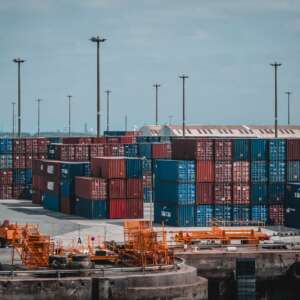The world of shipping might seem like a labyrinth of acronyms, complex procedures, and endless options. But don’t worry, you don’t need a decoder ring or a logistics degree to get your package from point A to point B efficiently. This guide will shed light on the shipping basics, equipping you with the knowledge to navigate this crucial aspect of our interconnected world.
Glossary of Terms
Must know Terms used for Air-Freight and Sea Freight Shipping
General Terms:
- AWB (Air Waybill): A document issued by an airline for air cargo, similar to a Bill of Lading for sea freight.
- Bill of Lading (B/L): A legal document issued by a carrier that serves as a receipt for goods, contract of carriage, and title document.
- Consignee: The recipient of the goods.
- Consignor: The shipper of the goods.
- Customs Clearance: The process of obtaining permission from customs authorities to import or export goods.
- ETA (Estimated Time of Arrival): The estimated time a shipment will arrive at its destination.
- FCL (Full Container Load): A container filled with goods from one shipper.
- LCL (Less-Than-Container Load): A container shared by multiple shippers with goods going to different destinations.
- Incoterms: International Commercial Terms used to define the responsibilities of buyers and sellers in international trade.
Air-Freight Specific Terms:
- Air Charter: The leasing of an entire aircraft for cargo transportation.
- Cargo Unit Load Device (ULD): A container or pallet specifically designed for air freight.
- Dangerous Goods: Goods that pose a risk to health, safety, or the environment during transportation.
- Ground Handling Agent: A company that provides services to airlines at airports, including loading and unloading cargo.
- Transit Time: The estimated time it takes for cargo to travel from origin to destination by air.
Sea Freight Specific Terms:
- Ballast: Water or other materials used to improve the stability of a ship when it is not carrying cargo.
- Bill of Lading (B/L): Types of B/Ls include House B/L (issued by a freight forwarder) and Ocean B/L (issued by the carrier).
- Charter Party: A contract between a ship owner and a charterer for the use of a ship.
- Deadweight Tonnage (DWT): The maximum weight a ship can carry when fully loaded.
- Free Inboard (FI): A term in an Incoterm where the seller delivers the goods on board the ship at the named port of shipment.
- Free on Board (FOB): A term in an Incoterm where the seller delivers the goods on board the ship at the named port of shipment but pays the costs of loading them onto the ship.
- General Average: A system for sharing the financial losses incurred by a ship and its cargo in case of a common peril.
- Gross Tonnage (GT): The total internal volume of a ship.
- Liner Service: A regular shipping service between fixed ports.
- Port of Discharge: The port where the cargo is unloaded.
- Port of Loading: The port where the cargo is loaded.
- Reefer Container: A container equipped with refrigeration to keep cargo at a specific temperature.
- Short Sea Shipping: Shipping goods over short distances, typically within a region or between neighboring countries.
- TEU (Twenty-foot Equivalent Unit): A unit of measurement for container capacity, equal to the volume of a 20-foot container.
Understanding Your Options
Choosing the right shipping method depends on several factors
Weight and Dimension:
- Air-Freight: Ideal for smaller and lighter shipments (under 1500 kg) due to higher cost per unit weight. Oversized cargo might require special handling and incur additional fees.
- Sea-Freight: Cost-effective for large and heavy shipments (over 5000 kg) where space utilization is prioritized. Oversized cargo often fits well in containers.
Speed:
- Air-Freight: Fastest option, reaching destinations within hours or days. Essential for time-sensitive deliveries.
- Sea-Freight: Slowest option, taking weeks or even months for long distances. Suitable for non-urgent shipments where cost is the primary concern.
Budget:
- Air-Freight: Most expensive option due to fuel costs and handling fees. Choose only if speed is critical.
- Sea-Freight: Most affordable option, especially for bulk shipments. Ideal for cost-conscious deliveries.
Destination:
- Air-Freight: Accessible to most destinations with airports. Consider potential limitations for remote areas.
- Sea-Freight: Reaches major ports worldwide. Check for connecting transportation needed for inland destinations.
Additional Factors:
- Temperature Sensitivity: Air-conditioned aircraft and refrigerated containers may be required for perishable goods.
- Dangerous Goods: Special regulations and documentation apply for transporting hazardous materials.
- Customs Regulations: International shipments require specific documentation and may face delays.


